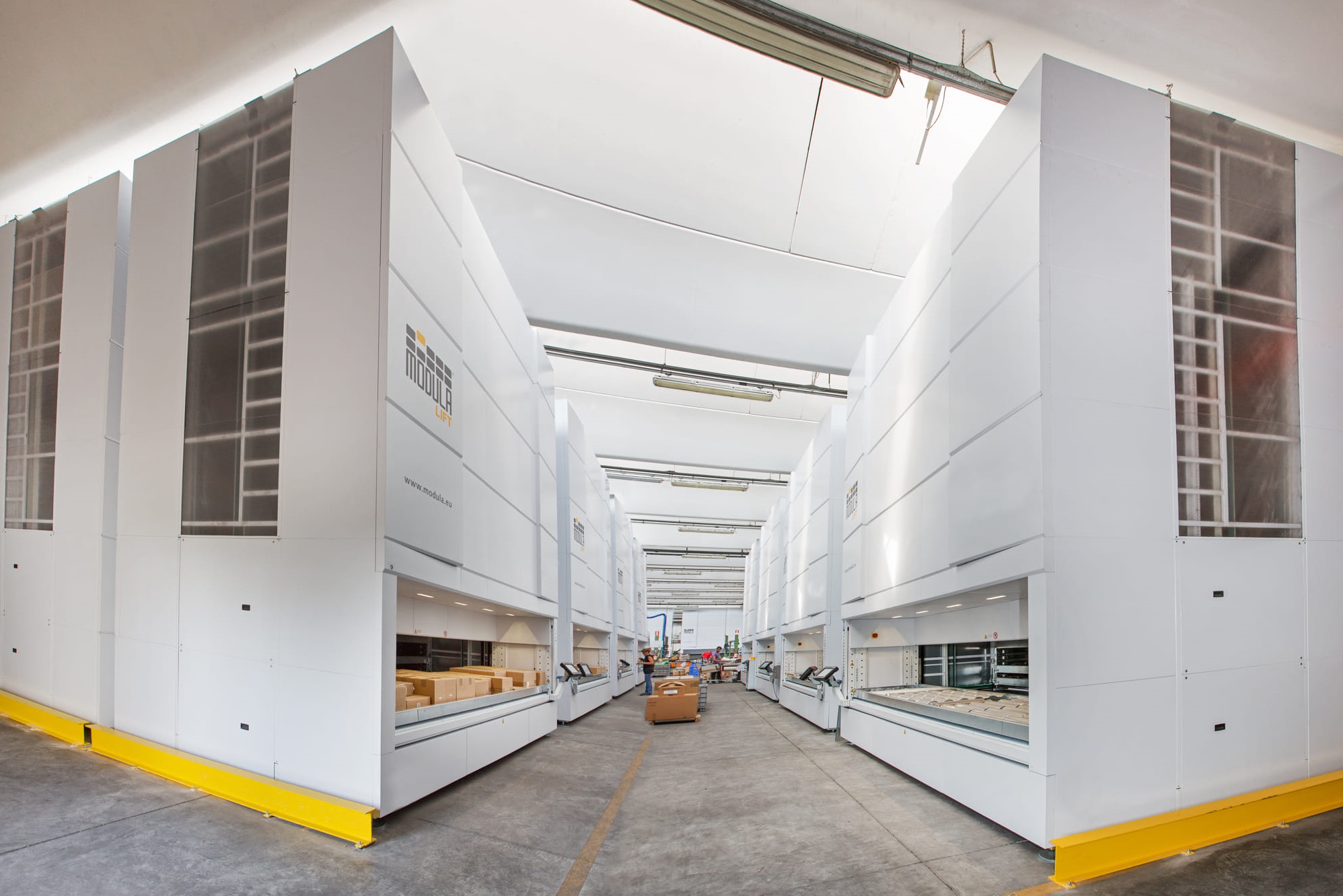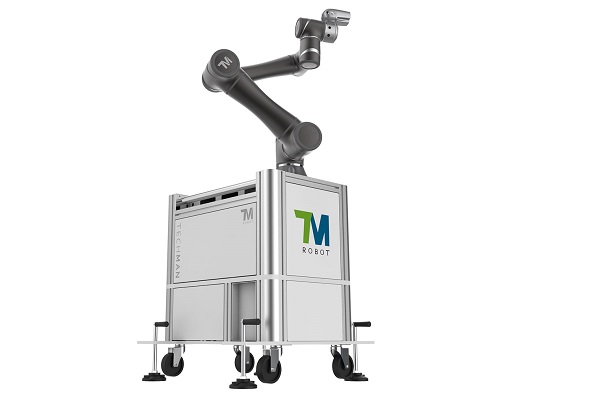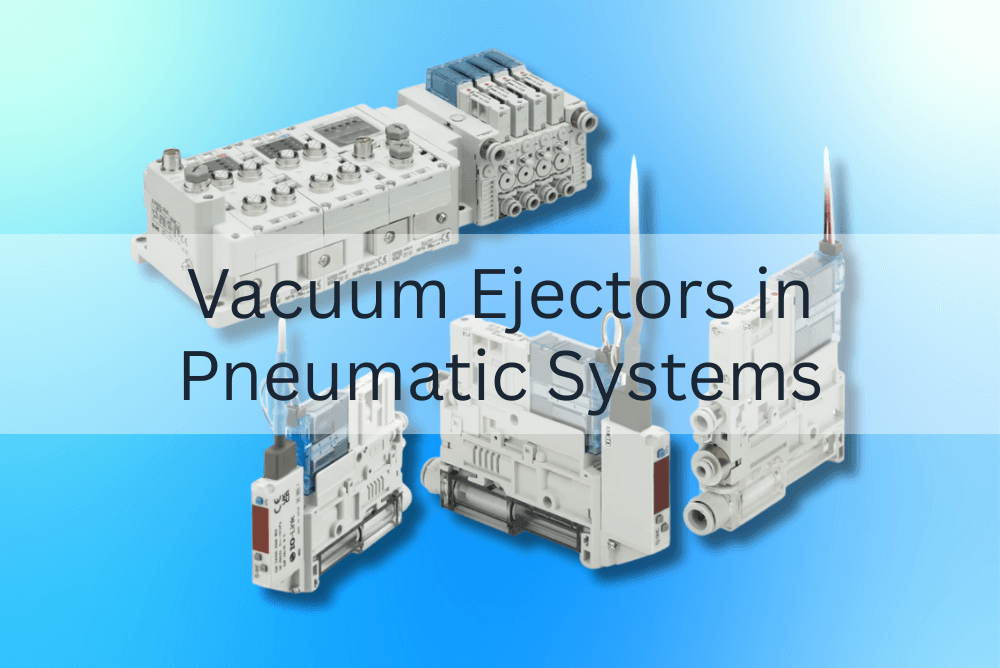Nowadays, the logistics industry in general, and warehouse management for businesses and factories in particular, are facing numerous challenges. These include inefficient space utilization, complex procedures, inventory management difficulties, and labor safety concerns.
In this article, we will explore the top 12 automation technologies for a smart warehouse, explaining how they operate and uncovering the core benefits of implementing these innovations in your warehousing operations.
Additionally, Temas will introduce you to highly-rated automated warehouse solutions that can help you visualize order processing workflows, optimize storage space, and enhance overall operational productivity across your entire warehouse.
What is Warehouse Automation Solutions?
Warehouse automation solutions refer to advanced systems, equipment, and technologies employed in warehousing facilities to enhance productivity and operational efficiency. These automation solutions optimize various processes within the warehouse, such as receiving and storing goods, inventory management, picking and sorting items, packing, and more.
Warehouse automation technologies are revolutionizing warehousing operations globally. From mobile robots and drones to AI applications, these solutions are driving efficiency, increasing productivity, and improving accuracy in warehouse operations. Here are 12 warehouse automation solutions that every business should be aware of.
1. Warehouse Management Systems (WMS)
Warehouse Management Systems (WMS) play a crucial role in automating and enhancing the efficiency of warehouse operations. These are scalable, customizable software solutions tailored to the scale and requirements of each warehouse. WMS helps managers centralize daily activities, optimize processes, and increase productivity.
One of the core features of WMS is the ability to accurately track and manage inventory in real-time. The system updates the location and quantity of goods as they are received, dispatched, or moved within the warehouse, minimizing the risk of loss or error. Additionally, WMS supports various other tasks such as:
- Warehouse Data Analysis: The system provides detailed reports on inventory flow, average storage time, demand forecasting, and supports effective inventory control strategies.
- Order Management: WMS helps process and track orders from receipt to dispatch, ensuring smooth, fast, and accurate operations.
- Labor Management: Some systems integrate task allocation for warehouse staff, reducing the time spent searching for items and improving productivity.
There are many WMS solutions available on the market, allowing you to research and choose a system that matches your business's specific needs.
Modula WMS from Modula is a prime example of a comprehensive Warehouse Management System. This system not only manages inventory and tracks goods in real-time but also integrates with automated storage and retrieval systems. Thus, warehouse processes are automated, significantly increasing efficiency.
While Modula WMS is often used in smart warehouse systems, it can also operate independently in traditional manual warehouses, helping managers improve productivity and minimize errors even before fully automating the warehouse.
2. Assisted Picking Tools
Assisted picking tools, also known as pick assist technologies, are warehouse technologies designed to help staff accurately locate and pick items according to SKU and quantity requirements for each order.
Popular assisted picking tools include:
- Pick-to-Light Systems: These systems use light signals to direct staff to the precise location of the item to be picked.
- Voice Picking Tools: These allow staff to receive and confirm picking orders via voice commands, freeing their hands to focus on picking items.
- Automated Picking Robots: These robots autonomously move to the storage location, pick the required products, and deliver them to the packing area, significantly reducing the time and effort required from staff.
By leveraging these assisted picking tools, warehouses can minimize errors in the picking process, such as picking the wrong item, incorrect SKU, or incorrect quantity.
One Modula picking cart with Put-to-Light
Modula's picking solutions are designed for easy installation, operation, and user-friendliness. They significantly increase picking speed and accuracy, optimizing the overall workflow for the entire warehouse, thereby enhancing efficiency and productivity.
3. Warehouse Drones
Warehouse drones, also known as Unmanned Aerial Vehicles (UAVs), are flying robots capable of performing various tasks within a warehouse, such as inventory management, goods transportation, facility surveillance, and maintenance.
Equipped with cameras and sensors, warehouse drones can assist in collecting inventory data, such as the location of goods and storage levels. They can be manually controlled by an operator or programmed to fly autonomously according to the specific requirements of each task.
A warehouse drones
Some key benefits of using drones in warehouses include:
- Efficient Movement in Space: Drones can quickly fly to high or distant locations within the warehouse. Their flexible flying capabilities also allow them to inspect hard-to-reach areas, providing an accurate overview of storage space utilization and organization.
- Enhanced Operational Productivity: By automating inventory and surveillance tasks, drones free up workers from repetitive and mundane tasks, allowing them to focus on higher-value activities such as picking and packing
- Improved Workplace Safety: Drones can be used to inspect hazardous or hard-to-reach areas within the warehouse, minimizing the risk of accidents for employees.
4. Mobile robots (AGVs and AMRs)
Mobile robots in warehouses encompass both Automatic Guided Vehicles (AGVs) and Autonomous Mobile Robots (AMRs). Both types of robots play crucial roles in warehouse automation, aiding in the transportation of goods and optimizing operational processes.
- Automatic Guided Vehicles (AGV): These robots are equipped with sensors and computer controls, capable of transporting goods within the warehouse. AGVs navigate along preset paths using embedded wires or reflective markers on the floor, eliminating the need for manual handling of goods.
- Autonomous Mobile Robots (AMR): More advanced than AGVs, AMRs can operate flexibly in changing warehouse environments without relying on fixed tracks or complex infrastructure. AMRs are typically equipped with sensors and sometimes artificial intelligence (AI), enabling them to operate independently without direct human supervision.
Although both AGVs and AMRs perform the task of transporting goods, AMRs are highly regarded for their intelligent navigation capabilities, allowing them to find optimal routes within the warehouse without relying on pre-established paths. This offers several advantages, such as:
- High Flexibility: AMRs can easily adapt to changes in warehouse layout without the need for time-consuming and costly reconfiguration of paths as required for AGVs.
- Enhanced Operational Efficiency: AMRs can optimize travel routes by autonomously avoiding obstacles thanks to their sensors, ensuring safer operations and reducing transport times.
- Increased Scalability: AMR systems can be easily scaled up by adding new robots without significant changes to warehouse infrastructure.
Read more: Temas AMR with LiDAR for any warehouse
5. Predictive Analytics
Predictive analytics is a technology that uses historical data, statistical algorithms, and machine learning techniques to forecast future outcomes. This enables warehouse managers to proactively plan and make informed decisions, optimizing operational efficiency.
Here are some applications of predictive analytics in warehousing:
- Inventory Management: By forecasting demand for different products, warehouses can proactively adjust inventory levels, preventing overstocking or stockouts.
- Predictive Maintenance: Analyzing historical data from warehouse equipment to predict when machines will need maintenance or are at risk of failure. This allows for proactive maintenance scheduling, minimizing downtime and enhancing operational efficiency.
- Demand Forecasting: Providing insights into future sales trends helps managers plan for peak seasons and allocate resources efficiently.
Modula Cloud is an example of such a system. In a smart warehouse, it plays a crucial role in collecting and analyzing predictive data. This cloud-based system gathers statistical data from all your automated storage and retrieval systems, regardless of location. Modula Cloud operates continuously, recording all data and displaying it on a user-friendly online portal. This allows you to monitor and manage warehouse operations from any device, anywhere in the world.
6. Automated Storage and Retrieval Systems (ASRS)
Automated Storage and Retrieval Systems (ASRS) are computer-controlled technologies that automate the storage, organization, and retrieval of goods within a warehouse. These systems utilize robotics, conveyors, cranes, and warehouse management software to perform storage and retrieval tasks without human intervention.
Key Components of an ASRS:
- Storage Equipment: Includes shelves, racks, or bins for storing goods.
- Retrieval Equipment: Robots, cranes, conveyors, or other mechanical devices for moving goods.
- Warehouse Management Software: Manages storage locations, tracks inventory, and coordinates the activities of retrieval equipment.
- Sensors and Control Systems: Sensors monitor and navigate the operations of retrieval equipment, while control systems manage and optimize the storage and retrieval processes.
With these components integrated into a comprehensive system, ASRS represents one of the most advanced warehousing technologies, providing numerous benefits for warehouse managers.
Here are some common types of ASRS:
- Vertical Lift Modules (VLMs): These systems store items vertically (up to ceiling height), making them ideal for warehouses with high ceilings, maximizing vertical storage space.
- Horizontal Carousels: Similar to VLMs but designed for low-height facilities, these systems expand horizontally. They are perfect for warehouses with low ceilings but large floor areas, optimizing horizontal storage space.
- Unit-Loaders: Designed for handling large, heavy items and unit loads like pallets.
- Mini-Loaders: Suitable for medium-sized and weight items such as bins or boxes.
- Tote Shuttles: Automatically transport totes (small, lightweight containers) to the required locations. These systems are commonly used for small, light goods stored in tote bins.
One Modula VLMs
Temas offers advanced warehouse automation solutions, including the ASRS (Automated Storage and Retrieval Systems). There are Modula Vertical Lift Modules (VLMs) and Modula Horizontal Carousels. Modula’s ASRS solutions significantly optimize your warehouse operations by:
- Maximizing Warehouse Space: The ASRS solutions increase storage capacity by utilizing both the vertical and horizontal dimensions of your warehouse. This optimization can improve storage area efficiency by up to 90% compared to traditional shelving.
- Safe Goods Storage: The automated systems handle loading and unloading using an internal elevator mechanism. This eliminates the need for warehouse staff to climb to high positions to retrieve items, greatly reducing the risk of workplace accidents.
- Automated Goods Retrieval: The system automatically locates and retrieves items as needed, saving employees time and effort, thus boosting productivity.
- Flexible Solutions: Modula offers a variety of ASRS systems suitable for different types of warehouses and various goods sizes. These smart warehouse systems can be customized to meet your specific needs, such as clean room warehouses, temperature-controlled storage, microelectronic component storage, pallet storage, etc.
7. Internet of Things – IoT
The Internet of Things (IoT) is a network of interconnected devices equipped with sensors, capable of connecting to the internet and transmitting data in real-time. In a warehouse environment, IoT plays a crucial role in inventory tracking, equipment monitoring, and operational optimization.
Common IoT Devices in Warehousing:
- Smart Wearables: For example, smart gloves equipped with sensors to collect and transmit data on manual handling activities. These devices can track hand movements and grip strength, helping to identify potential ergonomic issues and reduce the risk of injury.
- RFID Tags and Smart Sensors: These are attached directly to goods to track their location, minimizing the chances of loss or misplacement
- Environmental Sensors: These monitor key environmental factors in the warehouse such as temperature and humidity, ensuring optimal storage conditions, especially for perishable products.
Benefits of IoT in Warehousing:
- Real-Time Inventory Tracking: Managers can monitor inventory status in real-time, providing precise data on the quantity and location of each item.
- Equipment Condition Monitoring: IoT devices can track the operational status of warehouse equipment, predicting maintenance needs and preventing downtime due to equipment failures.
- Warehouse Layout Optimization: Data collected from IoT devices can help optimize warehouse layouts and allocate labor resources efficiently.
- Enhanced Productivity and Accuracy: IoT improves operational efficiency, accuracy, and minimizes errors in warehouse management.
8. Artificial Intelligence (AI) and Machine Learning (ML) in Warehousing
Artificial Intelligence (AI): AI is a field of computer science focused on developing systems or machines capable of performing tasks that typically require human intelligence. In warehouse operations, AI can assist robots or computers in tasks such as transportation, picking, and packaging of products..
By preventing picking errors, monitoring inventory status, and packaging orders, AI helps reduce the cost of product returns due to errors, enhancing the efficiency and accuracy of warehouse operations without requiring excessive human intervention.
Machine Learning (ML): ML is a subset of AI that allows machines to learn from data and improve performance over time. It analyzes data to identify patterns, make decisions, or provide intelligent predictions with minimal human input. As more data is processed over time, ML algorithms automatically adjust and enhance performance, increasing accuracy in operations.
Examples of AI and ML Applications in Warehousing:
- Smart Picking Robots: Utilizing AI and computer vision to accurately identify and pick items as requested.
- Demand Forecast: AI systems analyze historical sales data to forecast demand for products in the future, aiding in effective inventory management.
- Optimizing Transportation Routes: AI can calculate and recommend the shortest, most efficient routes for transporting goods within the warehouse, benefiting transportation robots.
By leveraging AI and ML technologies, warehouses can streamline operations, improve accuracy, and adapt dynamically to changing demands, ultimately enhancing overall efficiency and productivity.
9. 3D Bin Packing
3D Bin Packing is an algorithm used to pack goods into crates or boxes, calculating based on the three-dimensional dimensions of both the product and the packaging to optimize space.
Advantages of 3D Bin Packing technology:
- Maximizing space utilization: 3D Bin Packing ensures precise and scientific arrangement of goods, minimizing wasted space inside crates/boxes.
- Reducing packaging costs: By optimizing the arrangement of goods, this technology allows the use of the smallest possible crates/boxes, saving packaging material costs.
- Environmentally friendly: Minimizing the use of packaging means reducing waste, helping businesses operate sustainably and eco-friendly.
- Integration with automation: 3D Bin Packing can integrate with Warehouse Management Systems (WMS), Enterprise Resource Planning (ERP), and Transportation Management Systems (TMS) to automate the entire packaging process, saving time and labor.
Thanks to these advantages, 3D Bin Packing technology is increasingly being widely applied in warehouse operations, logistics, and e-commerce.
10. Inventory Scanning Technology
Inventory Scanning Technology plays a crucial role in tracking and managing detailed electronic inventory, including storage levels and product locations. Below are some common types of inventory stocktaking scanning technology:
- Barcode Scanners: These are the most common stocktaking scanning devices. Products are labeled with barcodes, and warehouse staff use barcode scanners to quickly read the barcodes, identify the Stock Keeping Unit (SKU), and update warehouse information.
- RFID Scanners: RFID (Radio Frequency Identification) utilizes electromagnetic waves to automatically identify Stock Keeping Units (SKUs) and track tags attached to products. The advantage of RFID over barcodes is its ability to read from a distance, without the need for direct contact with the product.
- Mobile Scanners or Handheld Terminals: These mobile devices integrate barcode scanners or RFID readers with mobile computers. They allow warehouse staff to scan items and update inventory data right in the work area, improving flexibility and efficiency.
11. Automated Document Insertion System
The Automated Document Insertion System utilizes automated devices to place documents such as packing slips, invoices, return forms, and promotional materials inside packages. This technology is programmed to accurately match documents with packages based on details like order numbers or customer information.
Advantages of the Automated Document Insertion System:
- Enhanced Productivity and Efficiency: Automating the document insertion process frees up labor from repetitive and mundane tasks, allowing them to focus on more critical activities that require human involvement.
- Error Reduction: The system's ability to automatically cross-reference and attach the correct documents to each package minimizes the chances of missing documents or incorrect attachments, ensuring professionalism and reliability in the shipping process.
- Time Savings: The system operates quickly and accurately, reducing packaging and preparation time, thus meeting customers' delivery needs promptly
12. Blockchain Technology in Warehouse Management
Blockchain technology is increasingly being applied in supply chain and logistics operations. Blockchain serves as a decentralized digital ledger where transactions are recorded transparently, securely, and immutably. Here are some benefits of applying Blockchain in warehouse operations:
- Traceability: Blockchain provides the ability to track and trace the entire journey of goods in the supply chain, from production to end consumers. This ensures transparency, combating counterfeit and fake goods.
- Efficient Inventory Management: All inventory-related transactions, including both inbound and outbound goods, are recorded on the Blockchain, enabling real-time and accurate inventory management.
- Auditability: The unchangeable nature of data on the Blockchain enhances audit transparency. Blockchain can easily provide evidence of a product's location at a specific time, who handled it, and where it was delivered.
- Smart Contracts: Blockchain can be used to create smart contracts - self-executing agreements with pre-programmed terms. This can help automate certain processes in the warehouse, such as automatic payment when contract conditions are met.
- Reduction of Paperwork: Since data on the Blockchain is stored digitally and updated automatically, it can significantly reduce the manual paperwork and records typically involved in warehouse operations.
How to Implement These Technologies to Automate Your Warehouse?
Utilizing automation technology in warehouse operations brings numerous practical benefits such as increased productivity, accuracy, cost savings, and overall improvement. Here is a step-by-step guide to integrating intelligent technologies into your warehouse operations:
1. Identify Your Current Warehouse Needs
- Do I need to expedite the order processing?
- Do I need more accurate inventory tracking?
- Do I need to minimize picking errors?
Once specific needs are identified, research technologies designed to address those issues.
2. Choose the Appropriate Technology
Identify which warehouse technology will address your current needs, such as Warehouse Management Systems (WMS), Automated Storage and Retrieval Systems (ASRS), Radio Frequency Identification (RFID) technology, Barcode Scanners, or Autonomous Mobile Robots (AMRs), etc.
3. Develop Deployment Plan
Develop a detailed deployment plan including project objectives, timelines, resource allocation (staffing, finances, materials), budget, risk assessment, and communication strategy. Ensure transparent communication with employees about upcoming changes, emphasize the benefits that technology brings to gain cooperation and minimize resistance during deployment.
4. Train Employees
Train employees on how to use new technologies by organizing theoretical and hands-on training sessions. Create detailed user manuals for reference when needed.
5. Conduct Pilot Testing
Instead of full-scale deployment initially, consider implementing pilot testing in a specific area of your warehouse to address any issues and make necessary adjustments before full-scale implementation.
6. Monitor and Evaluate
After conducting testing, continuously monitor the performance of the new technology and assess its impact on your processes. Based on the results obtained, identify areas where additional training for employees is needed, features that require adjustment, or upgrades to the system.
7. Continuous Improvement and Adjustment
Based on your evaluations, make necessary adjustments to optimize the use of technology in your warehouse.
Benefits of Applying Technology in Warehouse Management
Automating warehouse operations brings numerous practical benefits, optimizing activities, enhancing productivity, and ensuring labor safety. Here are some key benefits of implementing technology solutions in warehouses:
- Warehouse Space Optimization: Instead of incurring costs for renting or constructing additional warehouse space (as land becomes increasingly scarce!), vertical Automated Storage and Retrieval Systems (ASRS) can help maximize warehouse height, increasing storage capacity.
- Increased Operational Productivity: Autonomous Mobile Robots (AMRs) and other automated devices can replace humans in performing simple, repetitive tasks like cargo transportation. This frees up labor from tedious tasks, allowing them to focus on more complex tasks requiring cognitive skills and expertise.
- Efficient Inventory Tracking and Control: Devices such as barcode scanners, RFID tags, IoT sensors combined with Warehouse Management Systems (WMS) provide real-time inventory tracking, accurately capturing the location and quantity of goods. This helps minimize stockouts when goods need to be shipped and limits excess inventory, reducing storage costs. Additionally, Blockchain technology can provide traceability of the entire product journey in the supply chain, ensuring transparency and combating counterfeit goods.
- Effective Data Management: Technology solutions like WMS, IoT, and Blockchain allow for real-time data collection and analysis, providing an overview of warehouse operations. This enables data-driven decisions to optimize processes and save costs.
- Improved Workplace Safety: Wearable smart devices can monitor employee health, alerting to potential safety issues such as fatigue, overheating, or injury. Predictive maintenance, using historical data to forecast equipment breakdowns, minimizes the risk of accidents.
- Enhanced Customer Satisfaction: By accurately controlling inventory and automating the warehouse in-out processes, technology helps reduce stockouts, enabling faster deliveries and better meeting customer demands.
Smart warehouse enhances labor safety by autonomously transporting goods to the warehouse staff's location
Modula's Warehouse Technologies Distributed by Temas
Modula stands as one of the leading pioneers in advanced storage solutions and warehouse management systems. Temas is currently the official distributor of Modula, specializing in automated warehouse solutions that help save warehouse space, enhance picking accuracy and efficiency, while also improving worker safety.
We facilitate the enhancement of internal logistics for all warehouses, regardless of scale and industry, with a commitment to innovation demonstrated through high-tech manufacturing standards, allowing us to deliver valuable solutions for global customers.
The warehouse technology solutions we provide include:
- Vertical Lift Modules: Maximizing warehouse ceiling height to save floor space.
- Horizontal Carousels: Suitable for warehouses with low ceilings, optimizing storage and retrieval of goods.
- Order Picking Solutions: Increasing productivity and accuracy in picking, minimizing errors.
- Warehouse Management System - WMS: A comprehensive software solution that automates and manages all warehouse operations.
- Modula Cloud Platform: Collecting and analyzing real-time data, enabling monitoring and management of warehouse activities from any device, anywhere in the world.
Share with us your warehouse management ideas, and we will advise and implement warehouse automation technologies tailored to your business needs.


 Read more
Read more



